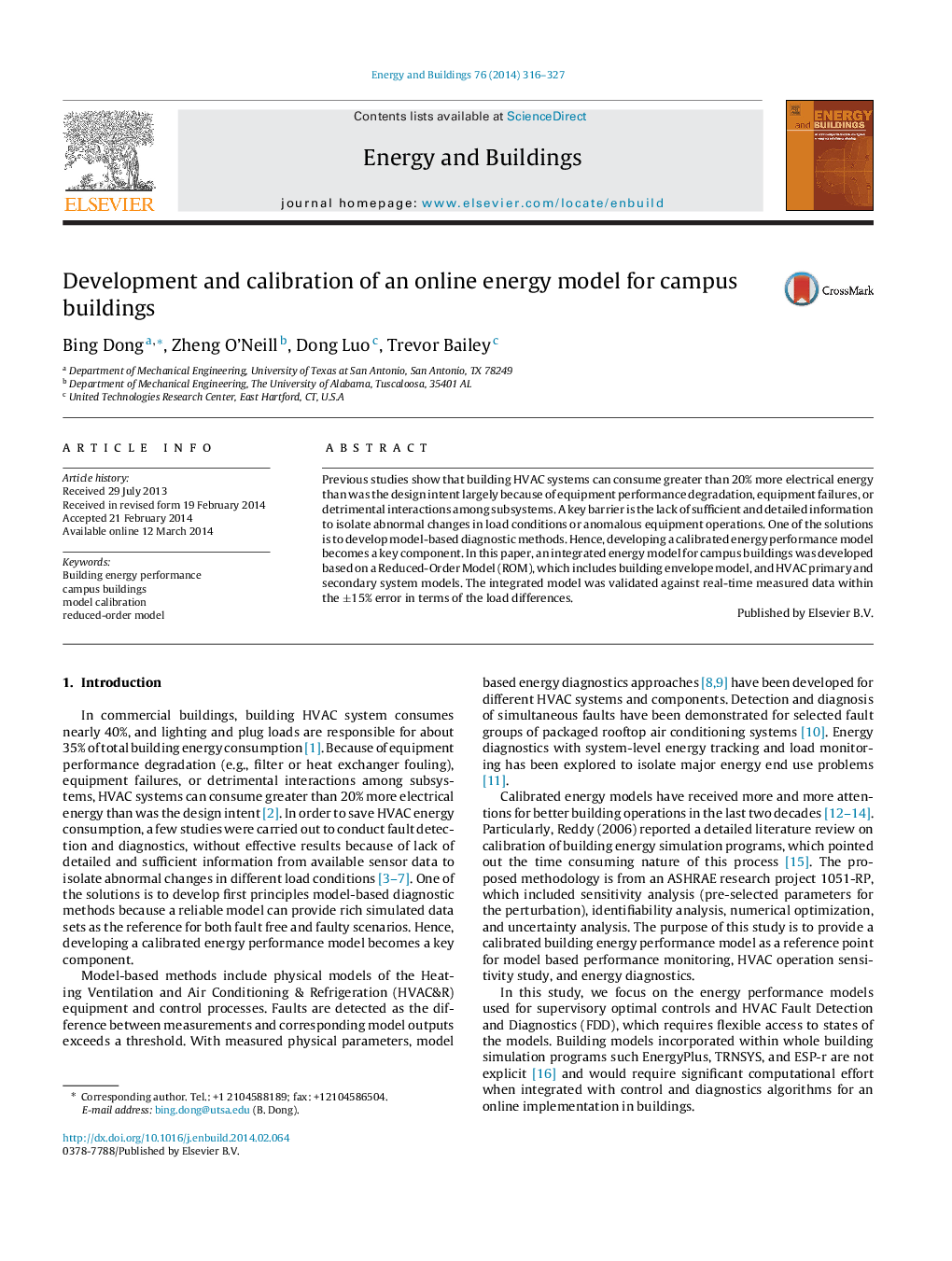| Article ID | Journal | Published Year | Pages | File Type |
|---|---|---|---|---|
| 6733764 | Energy and Buildings | 2014 | 12 Pages |
Abstract
Previous studies show that building HVAC systems can consume greater than 20% more electrical energy than was the design intent largely because of equipment performance degradation, equipment failures, or detrimental interactions among subsystems. A key barrier is the lack of sufficient and detailed information to isolate abnormal changes in load conditions or anomalous equipment operations. One of the solutions is to develop model-based diagnostic methods. Hence, developing a calibrated energy performance model becomes a key component. In this paper, an integrated energy model for campus buildings was developed based on a Reduced-Order Model (ROM), which includes building envelope model, and HVAC primary and secondary system models. The integrated model was validated against real-time measured data within the ±15% error in terms of the load differences.
Related Topics
Physical Sciences and Engineering
Energy
Renewable Energy, Sustainability and the Environment
Authors
Bing Dong, Zheng O'Neill, Dong Luo, Trevor Bailey,
